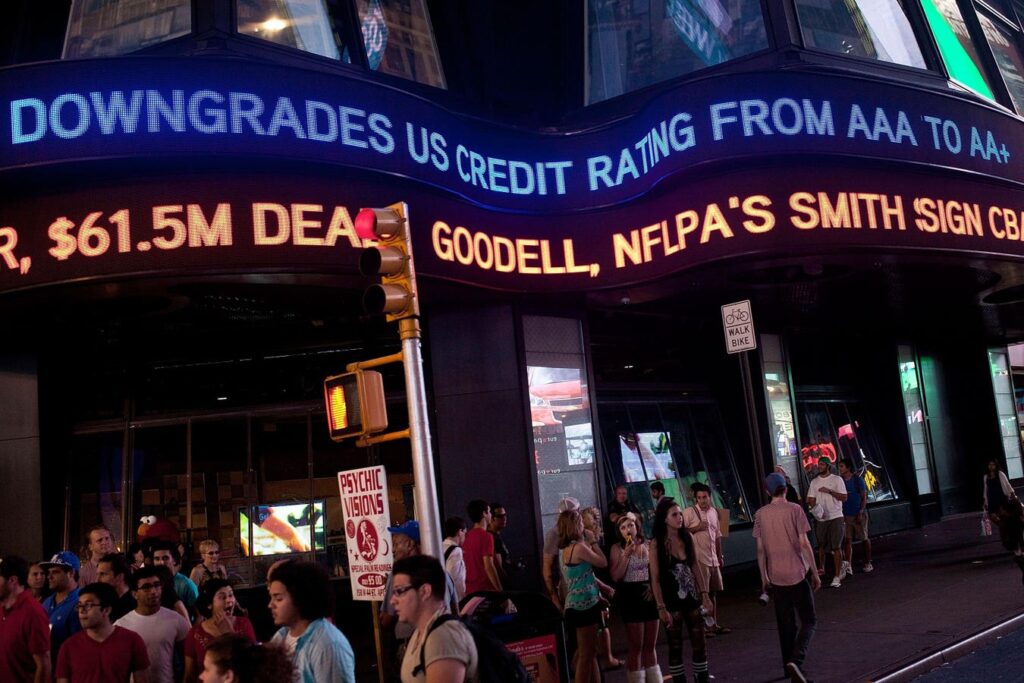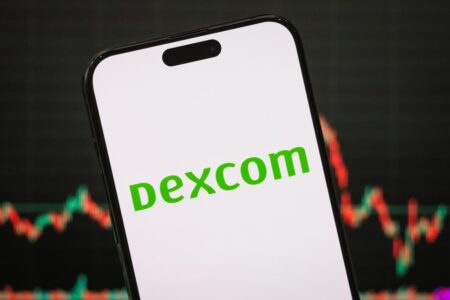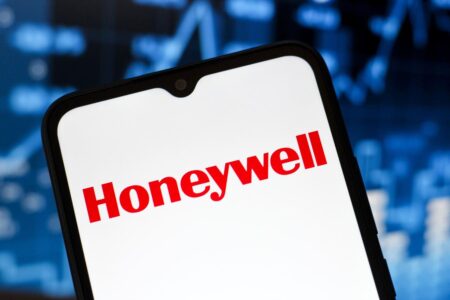In August 2011, S&P Global Ratings made history, stripping the United States of its coveted AAA credit rating for the first time ever. The reason? Political dysfunction and concerns over America’s ballooning debt. Fitch Ratings followed suit in August 2023, citing exactly the same factors: rising debt, political instability, and governance issues.
Today, the economy is arguably in a worse place, and the political environment even more fractured. And the global uncertainty triggered by the ongoing tariff war – and in particular, its expected negative impact on an already flailing U.S. economy – could just end up being the final push credit rating agencies need to initiate another ratings downgrade.
What will follow is easy to guess. Outflows across asset classes will hurt investors across the board. And it will take a while before focused action by the U.S. government as well as the Federal Reserve restores investor confidence in U.S. markets. In the meantime, expect more one-day drops that could wipe out trillions of dollars from the stock market.
But it isn’t all doom and gloom. Smart money rotates, as demand does not decline uniformly across industries. We adopt a macro-conscious approach in our High-Quality portfolio, which has outperformed the S&P 500 and achieved returns greater than 91% since inception.
Now let’s review the facts that lead us to believe a rating downgrade is in the cards.
The U.S. Economy Is Weaker Now Than It Was In 2011
Back in 2011, the U.S. was crawling out of the Great Recession. So many key economic indicators were understandably worse off than they are now. More specifically,
- Inflation (CPI) is currently 2.4% vs. a figure of 3% in 2011.
- Unemployment rate is at 4.2% vs. a level of 9% in 2011
- Real GDP growth for 2024 was 2.8% vs. 1.8% in 2011
But that’s only half the picture. Here are some other key economic indicators that paint a worrying picture:
- The U.S. national debt figure currently stands at $36.2 trillion. That’s a whopping 124% of the country’s GDP. In 2011, the debt figure was less than half the current figure at $14.8 trillion – roughly 95% of U.S. GDP.
- The fed funds rate is currently at 4.3% as the Federal Reserve tries to ensure a “soft landing” for the U.S. economy after inflation swelled to over 9% in mid-2022. While the current fed rate is better than the level of over 5% maintained over most of 2023 and 2024, the figure was near 0% in 2011 in response to the 2008 recession.
- The higher debt figure combined with higher interest rates mean that the U.S. is spending much more to service its debt. Nearly 4 times more. The country shelled out $230 billion in interest payments in 2011 and will be paying $952 billion in interest over 2025
Put simply: the U.S. is a lot more indebted today than it was in 2011, and servicing that debt is a lot more expensive.
And Then, There Is The Tariff War
The escalating tariff war – particularly between the U.S. and China – is a new ingredient in the mix this time around. In 2011, trade tensions were low. But the uncertainty surrounding the current tariff war has made investors wary.
Why? Because:
Tariffs = inflationary pressure = higher borrowing costs = greater fiscal strain
While President Trump’s goals of reducing the country’s trade deficit, encouraging domestic manufacturing, and pressuring other countries to lower their trade barriers should bear fruits in the long run, there will be near-term consequences everyone will have to bear with.
And Trump knows this well – hence his remark: “Hang tough, it won’t be easy.”
Over the last few weeks, markets have been characterized by unusually high volatility. The benchmark S&P 500 index constituents have recorded a single-day loss of $3 trillion just as easily as a gain of $2 trillion.
Investors don’t like uncertainty. They don’t like risk – definitely not these high levels of risk. The result: Foreign institutions and investors want less U.S. stocks, U.S. bonds, and yes, U.S. dollars. As investors dump U.S. assets in favor of foreign alternatives, stocks have suffered losses, bond yields have risen and the dollar has weakened.
Déjà Vu: Political Dysfunction All Over Again
S&P’s 2011 downgrade cited “political brinksmanship” over the debt ceiling. That toxic mix is still very much alive.
Strife between the Democrats and Republicans was intense in 2011. It’s hard to argue that the Democrats’ relationship isn’t more bitter with Trump. And not to mention, there are disagreements among factions of the Republican party too this time around.
The ingredients for another downgrade are already in the pot — all it needs is a spark.
Ratings Agencies: Burned Once, Cautious Now
After the 2011 downgrade, S&P faced immense backlash, including a Justice Department lawsuit accusing them of misleading investors before the 2008 financial crisis. While the lawsuit was about mortgage bonds, the timing – right after the downgrade – was no coincidence.
Fitch and Moody’s stuck with AAA back then – knowing the political firestorm a downgrade could ignite. Fitch went ahead with the downgrade under calmer economic conditions in 2023. And Moody’s has maintained its AAA rating with a negative outlook since November 2023.
Notably, in a release earlier this month, S&P Global Ratings highlighted key risks to the U.S. economy that could warrant a downgrade from the current AA+ level. And many of those risks seem to be coming to head.
The math is getting harder for credit agencies to ignore. Another hit from any one of them isn’t unthinkable – it’s plausible.
Ignoring the Warning Signs Would Be a Mistake
Markets have so far shrugged off the risks, believing America’s “full faith and credit” is untouchable. But history says otherwise – and the economic, political, and financial cracks are widening.
The real question isn’t “if” the U.S. credit rating could be downgraded again. It’s whether you’re prepared when it does. The last thing you want is for your investment portfolio to take an outsized hit when things head south. At the very least, you would like your investment to do better than the overall equity market – particularly during bad times.
The Trefis High Quality (HQ) Portfolio, that roots itself in quality that seeks reliability, predictability and compounding growth, is an option you can explore. With a collection of 30 stocks, it has a track record of comfortably outperforming the S&P 500 over the last 4-year period. Why is that? As a group, HQ Portfolio stocks provided better returns with less risk versus the benchmark index; less of a roller-coaster ride as evident in HQ Portfolio performance metrics
Read the full article here
















